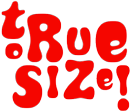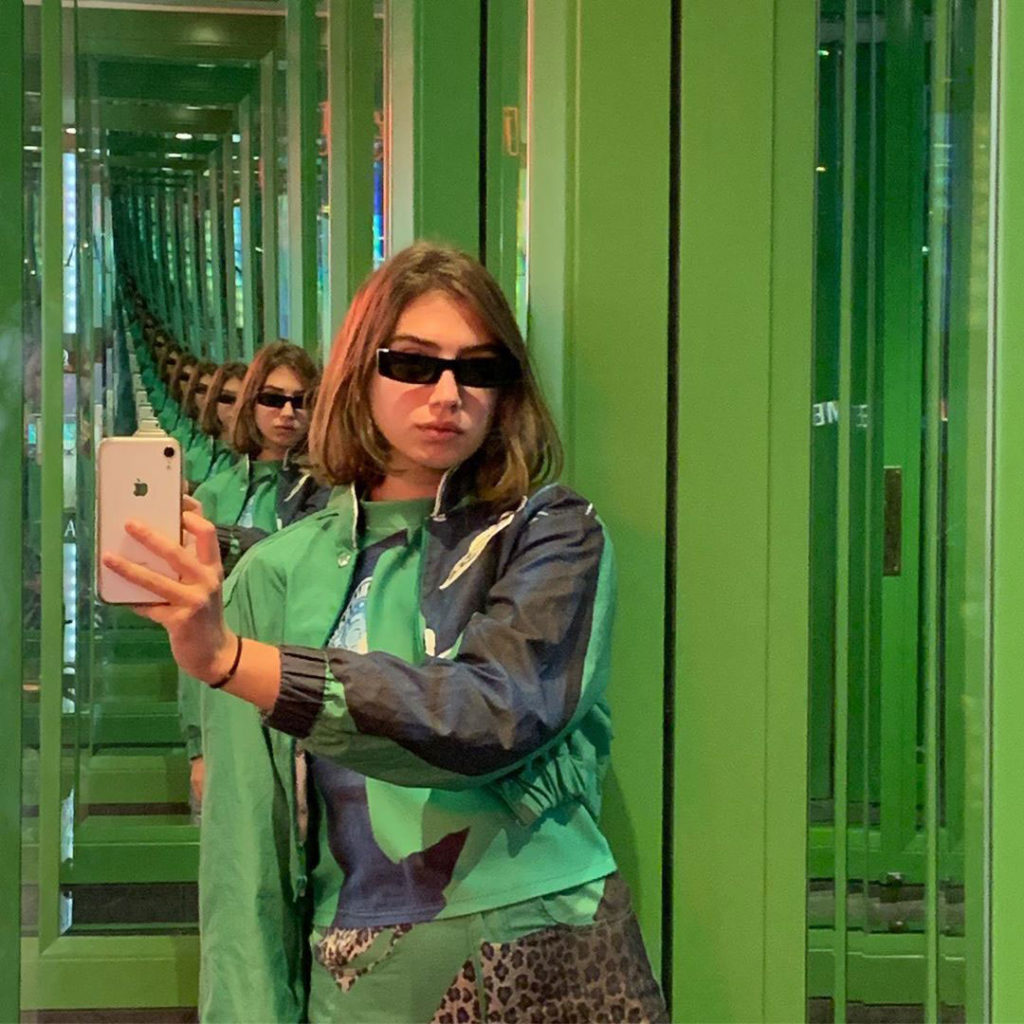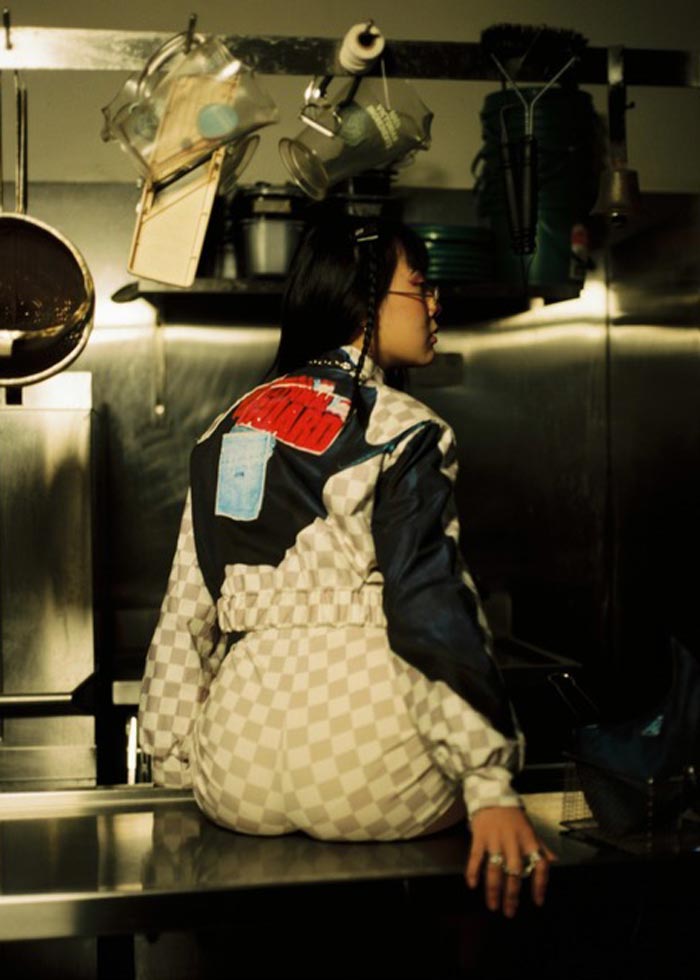Emma (Adelaide) was interviewed on the phone by Elliott (Adelaide) in April 2020.
The photos throughout the interview have been taken by Emma herself, Chloe Smith, Joanna Petrov, Georgina Taylor and Jordan Luettke.
A recent graduate from RMIT in Melbourne, Emma Frankcom has moved back home to Adelaide while she works out what’s next. I’ve known Emma for years, having met in high school, but it’s been a long time since we’ve both been living in the same city. So, despite the strange restrictions we’re living under due to covid-19, it felt like a good moment to catch up and reflect on a few things central to Emma’s growing fashion universe: leopard print, social media, and Susan Sontag.
As we discussed, she seeks to design clothes that go beyond being beautiful, but that tell us something too. In her graduate collection Unreal Content, inspired by paparazzi photos, fast fashion and social media, she launches a critique of the fashion world and the hyper-consumption that it too often thrives on.
Elliott Papazahariakis
Emma Frankcom
We’re a few weeks into isolation here in Australia. What are you wearing right now?
I am wearing a pair of sweatshorts, they’re very comfy. And a jumper that I just stole from Luke, my boyfriend. It’s a Jaden Smith jumper, and I’m a fan of it to be honest. It’s very comfy, and it’s like many sizes too large for me. Quite cosy though.
And what have you been wearing these days?
Well I bought a pair of boots from Tony Bianco the other day, and I’ve been wearing those to the supermarket, with jeans and a jumper. But that’s about as much as I’ve dressed up lately. The rest of the time I’ve just been in pants that I wear to bed. I will wear one pair of pants to bed and then I’ll put on the pair that I wore to bed yesterday as my day clothes for that day. So I feel like I’ve changed into clothes, but it’s just my pyjamas from last night, or the night before.
I guess comfort comes first now. You’ve recently graduated with honours in fashion design. What led you to studying fashion?
Such a journey, honestly. It was a long time coming decision, but also a rash decision as well. I’ve always been interested in fashion, that was sort of my hobby before I studied it. I would make clothes in my free time, and when I was a kid I would make shoes out of paper mache, and then one night… I hadn’t really been considering it, but I was up at 4 in the morning and I couldn’t sleep and decided to look at courses for fashion in Melbourne. I applied right there and then, and I was invited for an interview and I ended up studying it for the last four years at RMIT in Melbourne. I guess I was also looking for a bit of a way out from my situation at the time. I needed a change from my hometown Adelaide and my studies in psychology, which were slowly but surely wearing me down.
So it was this long term interest growing or developing, and then you were finally like ‘you know what? I’m just going to give this a shot because why the fuck not’?
Yeah, I think it was a subconscious thing brewing in the background, and then it just kind of bubbled up all at once, and I just did it I guess. I think I just wait for things to feel right, I don’t really think about things. Even with my big life decisions, I just go with how I’m feeling, and that tends to be decisions that I don’t regret.
How did you find the move? And your studies?
Melbourne ended up being the perfect place for me to find my voice as a designer, and I guess myself in general. In the end, I was actually able to incorporate my knowledge in psychology into my graduate collection, and I wrote my honours thesis on the psychology of unethical fashion. I was really lucky to be studying at RMIT because the course was very open to interpretation. We were allowed to delve into areas that we were really interested in, even if it wasn’t conventional fashion design. Everything just came together in the end, and it felt like all of the puzzle pieces fit. I think I knew exactly what I was doing that night at 4 am.
You mentioned making clothes and shoes when you were younger. Are there any pieces that stand out? I can remember some kind of leopard top you made years ago.

One of the first things I made was this mesh, see-thru black singlet. And then I thought it would be a good idea to cover the nipples, ‘cause you had to cover that up of course, with a tiger, a 3D leopard that I made myself, kind of like just sewn onto the front, with the tail hanging off. And I just thought that was so innovative, it was amazing. I think I was about 14 then.
I think it was probably the fact that I was making something that would also be a part of my identity, and I could have it on my body afterwards that was so exciting.
It seems like fashion has had a very enduring presence in your life. We’re 25 this year, which is kind of terrifying, but if you started making clothes at 14 or so, then you’ve been thinking about fashion for about 10 years now.
Yeah, for sure. It’s kind of strange because I haven’t been brought up in a fashionable family, or a family that’s interested in art, or anything related to art at all. And I just somehow chose this out of nowhere. So it does seem a little bit like fate almost.
So then what were your influences?
I have no idea. I really don’t know where it came from. I don’t think I was copying anyone, or idolising someone. I think I just thought it was really interesting to make things that I could wear. I think it was probably the fact that I was making something that would also be a part of my identity, and I could have it on my body afterwards that was so exciting.
I describe myself as a sceptical practitioner of fashion because I don’t want to subscribe to the conventional practices of a fashion designer, and like to rethink the design process and examine the motives behind the production of clothing.
I think that’s a really interesting idea. Speaking of making clothes, you describe yourself as a ‘sceptical’ practitioner of fashion on your website. Can you tell me more about your fashion practice?
It’s been a bit all over the place, it’s been a bit of a journey since I started. And i’ve definitely gone off in a lot of different directions, and it’s definitely been influenced by the way that I was taught at uni as well, because we did have boxes to tick, and we had to have a theme each semester that the whole class would work with. But I think in my last year, where I’ve had a lot more freedom, what I’ve found is that I’m most interested in the concept behind the clothes, rather than just making things that look nice. I feel like anybody can do that, and beauty is also just a trend, really, which i’m not interested in. So I guess, in anything that I make these days, or any of the ideas that I’ve had recently, they’ve been more about conveying a message through clothing, rather than just purely finding something that is aesthetic, because there are so many options that you could do to make something beautiful – how do you choose? I don’t understand how people do it. It’s too broad for me. I need it to be more meaningful than that.
In this sense, I guess I describe myself as a sceptical practitioner of fashion because I don’t want to subscribe to the conventional practices of a fashion designer, and like to rethink the design process and examine the motives behind the production of clothing.

What about your graduate collection Unreal Content? How did you come up with the idea?
I was feeling a bit lost with how much freedom I had in my last year at uni and I saw all these other people designing things that were beautiful, and I was like, why should I bother designing another beautiful thing? It felt quite pointless to me when I was amongst so many other students working towards the same goal. I just kind of lost my purpose of being there.
Mum says that I’ve been a non-conformist since birth and I think it was this side of me that came out and took over my decisions at that point. I wanted my graduation collection to be more meaningful and to communicate some sort of message that I believed in. From there I was looking into how fashion is portrayed on social media, and how that medium is so important in our consumption of fashion, because a lot of the time you only really see ‘fashion’ on your screen. You rarely see Bella Hadid with Fendi Leopard Print Pants walking down the street in Adelaide for example. And I think often nowadays people buy clothes just for Instagram photos… So I think that’s where my idea came from. I was critiquing that process. The thought process behind people’s purchases – because I think there’s way too much emphasis on our online presence nowadays and there’s a lot more to life than how many likes you get or followers you have. I wanted to take that idea and communicate it through clothing.
I was looking into how fashion is portrayed on social media, and how that medium is so important in our consumption of fashion, because a lot of the time you only really see ‘fashion’ on your screen.
And Bella Hadid? How and why did she come into the picture?

I wanted to imagine how fashion would look if celebrity street style was replicated directly from paparazzi photos to fast fashion without accurately interpreting the elements we don’t see in 2D images. In an attempt to be satirical, I ended up getting photos of Bella Hadid from social media, and some were from the Daily Mail, and basically printing them out in a 2D format and putting them onto another outfit – basically saying it’s going to be 2D anyway, so you might as well print it out, because it’s going to look the same in a photo.
I chose Bella because she’s someone who fast fashion brands look to, to copy the styles that she wears and reproduce the clothes from street style photos into their own cheap and nasty alternative. Oh and she’s the person who shows up on my discover page on instagram the most.
It’s kind of like flattening reality into images. It’s interesting how your work plays with transformations. It turns the digital into the material, and then it transforms itself once again into the digital when it inevitably ends up in photos.
Yeah exactly. That’s often the process of fashion design nowadays. Unless you’re at the Gucci Runway, then you’re only really going to see people wearing Gucci on social media. People who design clothes have that in mind as well. They’re designing something 3D to then look good in a photo, because that’s how they sell everything. It’s interesting. I’ve kind of cut out the middle man, going straight from 2D to 2D.
Joanna both stands out and blends into her environment wearing these glitched, greenscreen pieces from Unreal Content
What about your aesthetic choices? And what materials did you use?
So I used quite pixelated images for some of the designs and had some patches made so I could layer the images as if they had glitched on the screen. I guess it just added a bit more interest and conveyed the message quite well. The green that I used for one set of jacket/t-shirt/pants was meant to mimic a green screen, and the checkerprint was taken from the transparent photoshop layer, in keeping with the theme, but also it just looked cool. In the spirit of my thesis on the psychology of unethical fashion, I used organic cotton jersey and canvas to print onto and water based dyes from Next State Print, who by the way are super cool and are the reason I came out with a degree.
Yeah, but I think the people who allowed me to be there perhaps didn’t understand the message behind it… They just liked how it looked. So it really has just gone full circle.
Your collection is playful and fun, but it also expresses this powerful critique, and the fact that it was chosen to be shown at Melbourne Fashion Week1 is quite ironic. What you made as a critique of the fashion industry ended up making its way directly into the fashion industry.
Yeah, but I think the people who allowed me to be there perhaps didn’t understand the message behind it. They just purely liked the clothes, which is interesting as well. I’ve done other collaborations with stylists who have used my clothes and submitted them to magazines, and they’ve been paired with all these other normal clothes, and I think they had no idea what the message was. They just liked how it looked. So it really has just gone full circle.
This reminds of something Susan Sontag writes in On Photography2 – “Today everything exists to end in a photograph”. What do you think?
True! I think Susan hit the nail on the head… Yeah, I mean that captures what my whole grad collection is about, and kind of insulting, making fun of, or critiquing if you want to phrase it that way.
I feel like I’m friends with everyone at the moment. Like, I can go to the supermarket wearing my pyjamas, because I can just be like ‘how’s this coronavirus? You know? No one’s going to judge me.
Sarah is about to cook up a storm in this transparent photoshop layer inspired set
I think it sums up nicely what we’ve been getting at. To finish up, how do you think fashion might change after this pandemic calms down?
I haven’t really thought about this that much. But I think it has brought people together in a way. I feel like for me, coming out of this, I’ll feel like people are judging me less on what I wear, because we have this common ground. I don’t know. I feel like I’m friends with everyone at the moment. Like, I can go to the supermarket wearing my pyjamas, because I can just be like ‘how’s this coronavirus? You know? No one’s going to judge me. Whereas before we felt a bit more distant, and had to impress people more.
In relation to ethical fashion, I think people will be out of that rhythm of having to stay on trend, and they might forget about the importance of that. Maybe it’ll become less important to them, because they’re not so caught up in that, and they’ve spent the last few months in their pyjamas. And I guess they’ll probably assess how they feel wearing that compared to wearing trends. I guess it gives people time to think about fashion seeing as a lot of us are wearing different clothes to what we normally would, and that maybe will change people’s mindsets about fast fashion hopefully.
Yeah, maybe it will help us to reconsider what’s valuable? What’s comfortable? What do we really need to own?
Yeah, I mean, how valuable is fashion? Because I’m getting on just fine in my trackpants.
Elliott Papazahariakis (@papazahariakis) is a writer currently based in Adelaide, Australia. Read all of Elliott’s pieces here.
1. Melbourne Fashion Week takes place in Melbourne in late August to early September, and is one of Australia’s most significant fashion events, showcasing a host of upcoming and established designers every year.
2. Susan Sontag’s On Photography is a critically acclaimed collection of essays published in 1977 that explores the complex role that photography has come to assume in modern society.










